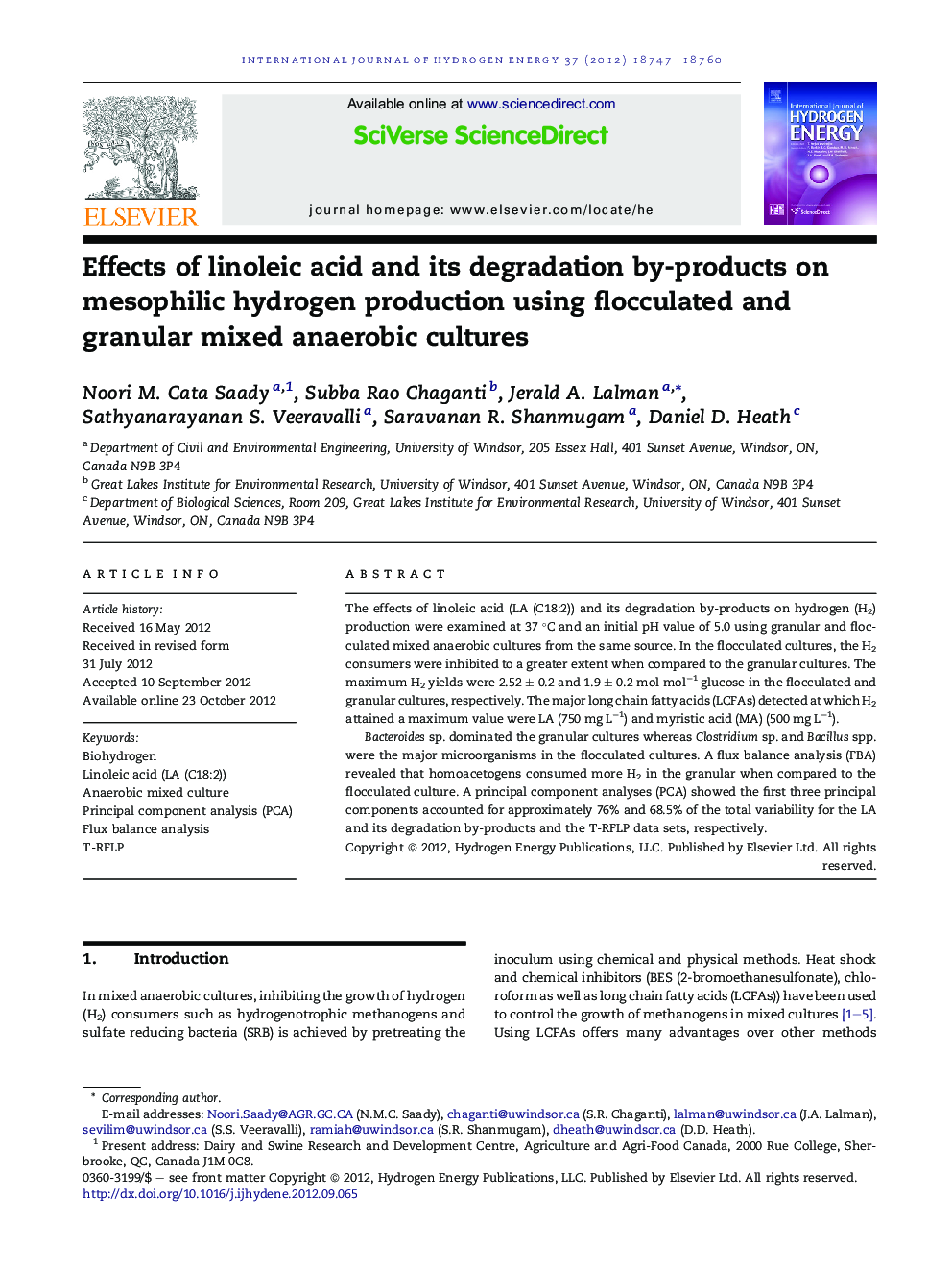| Article ID | Journal | Published Year | Pages | File Type |
|---|---|---|---|---|
| 1276080 | International Journal of Hydrogen Energy | 2012 | 14 Pages |
The effects of linoleic acid (LA (C18:2)) and its degradation by-products on hydrogen (H2) production were examined at 37 °C and an initial pH value of 5.0 using granular and flocculated mixed anaerobic cultures from the same source. In the flocculated cultures, the H2 consumers were inhibited to a greater extent when compared to the granular cultures. The maximum H2 yields were 2.52 ± 0.2 and 1.9 ± 0.2 mol mol−1 glucose in the flocculated and granular cultures, respectively. The major long chain fatty acids (LCFAs) detected at which H2 attained a maximum value were LA (750 mg L−1) and myristic acid (MA) (500 mg L−1).Bacteroides sp. dominated the granular cultures whereas Clostridium sp. and Bacillus spp. were the major microorganisms in the flocculated cultures. A flux balance analysis (FBA) revealed that homoacetogens consumed more H2 in the granular when compared to the flocculated culture. A principal component analyses (PCA) showed the first three principal components accounted for approximately 76% and 68.5% of the total variability for the LA and its degradation by-products and the T-RFLP data sets, respectively.
Graphical abstractFigure optionsDownload full-size imageDownload as PowerPoint slideHighlights► The study examined the effects of linoleic acid (LA) on H2 yield in flocculated and granular cultures. ► Compared to control, LA (2 g L−1) increased H2 yield. ► LA treated flocculated culture yielded more H2 than granular culture. ► T-RFLP analysis revealed that LA treatment increased the percentage of acidogens. ► Clostridium and Bacillus spp. dominated the LA treated flocculated cultures.
